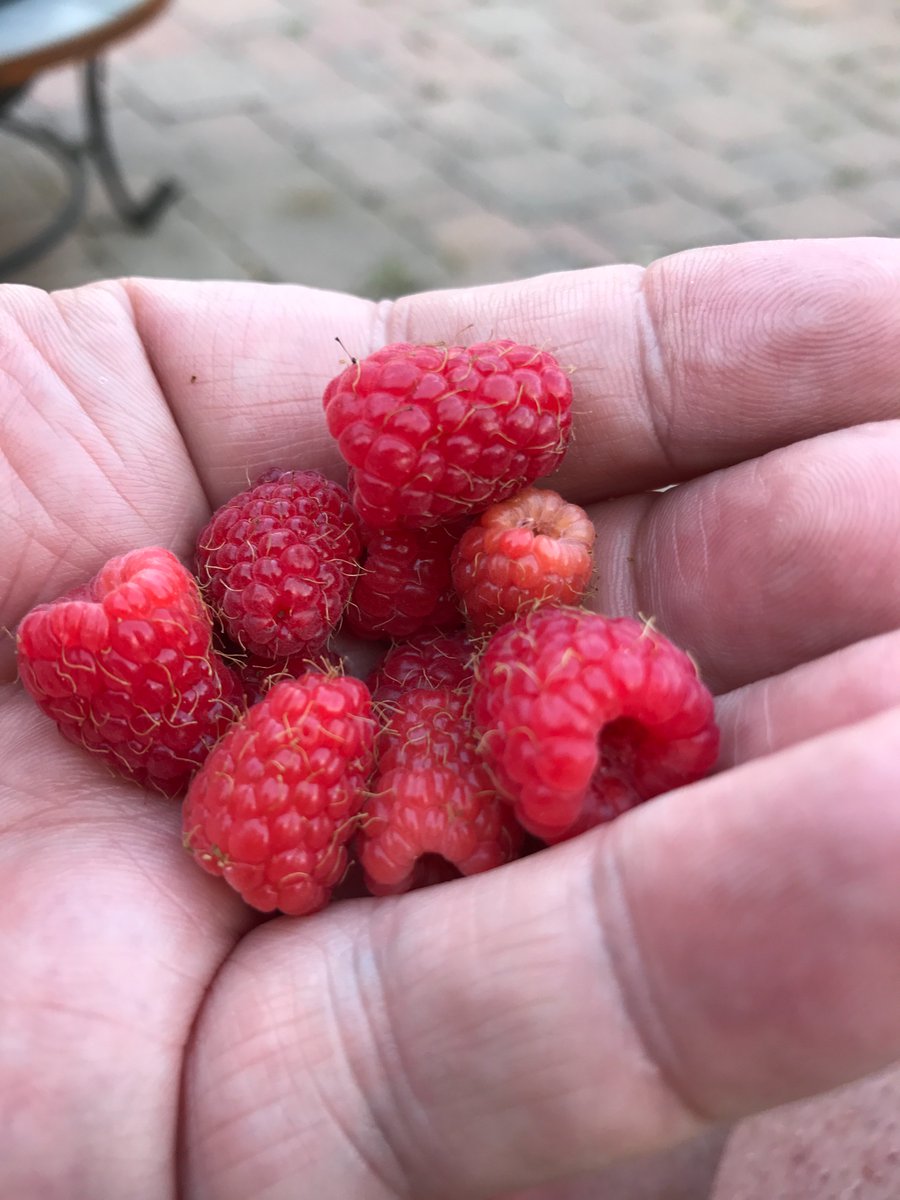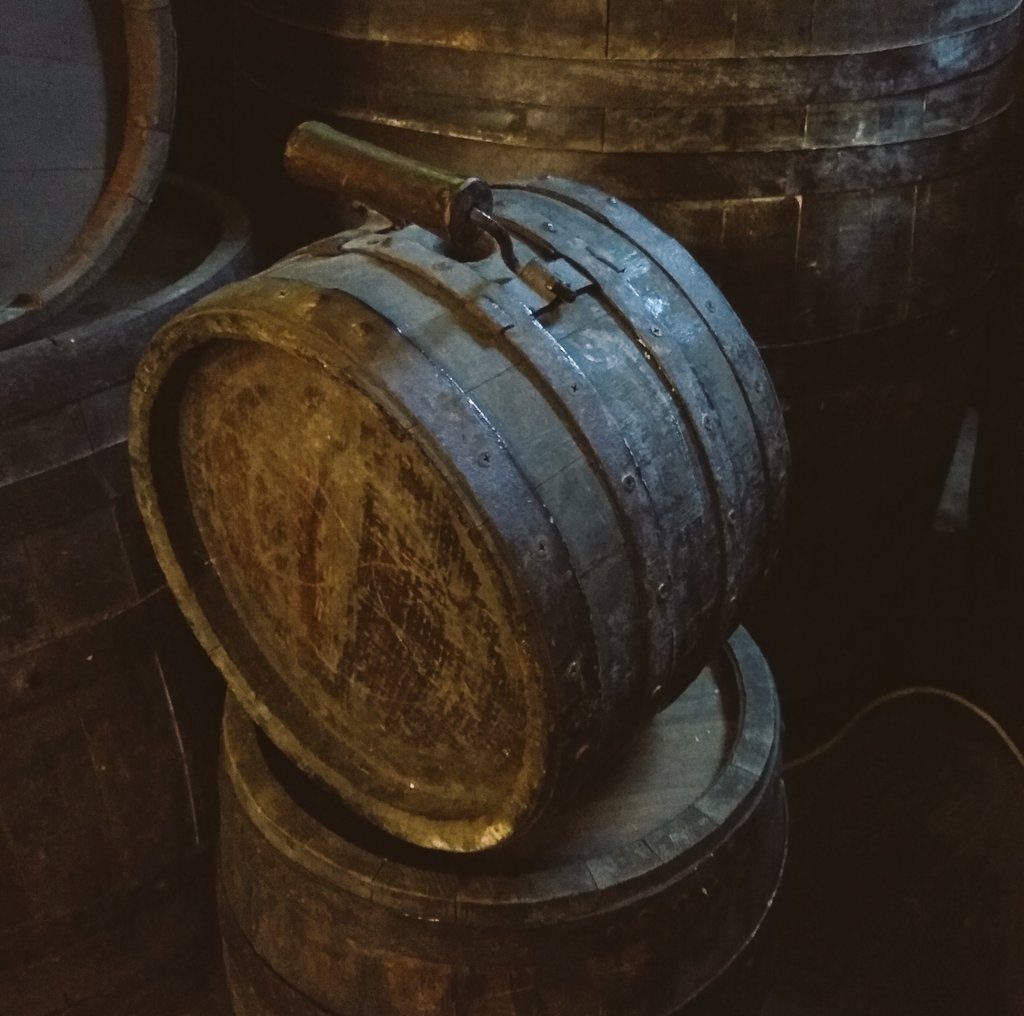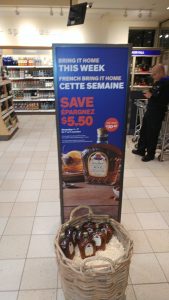 Mid-July! It’s lovely. Warm. Tropical even. We are actually getting the edgy remnants of Hurricane Barry into the Great Lakes basis so it’s all a bit thick out there. Raspberries picked by my own sausage-like digits. And the fire flies are at their peak. I let the garden go a bit and they seem to love it. 100+ flashes a minute in one corner of the garden. Beer has its role, too. I even had one last night, mid-week. At a Denny’s.* A Bud Light. The weirdest thing was being handed a ice cold bottle and an ice cold glass. Entirely hit the spot. Mid-week, mid-month, mid-summer, mid-year, mid-aged.
Mid-July! It’s lovely. Warm. Tropical even. We are actually getting the edgy remnants of Hurricane Barry into the Great Lakes basis so it’s all a bit thick out there. Raspberries picked by my own sausage-like digits. And the fire flies are at their peak. I let the garden go a bit and they seem to love it. 100+ flashes a minute in one corner of the garden. Beer has its role, too. I even had one last night, mid-week. At a Denny’s.* A Bud Light. The weirdest thing was being handed a ice cold bottle and an ice cold glass. Entirely hit the spot. Mid-week, mid-month, mid-summer, mid-year, mid-aged.
What is going on? Well, Josh Noel, who admitted to needing something to wash out his mouth after writing about hard seltzer, has written a helpful article for the Chicago Tribune on dark lagers:
And that gets to the genius of dark lager. They’re beers that typically have a modest amount of alcohol — about 5 percent or so — but are long on aroma and taste. Flavors usually include a mild to deep roast character and can veer into chocolate, char or coffeelike terrain thanks to the roasted malt that gives the beer its dark hue. But unlike most of the porters and stouts they resemble, dark lagers tend to finish dry. The best dark lagers make for stealthily ideal summer beers: interesting layers of flavor, but refreshing. The color, which can range from deep amber to impenetrably black, winds up playing a visual trick.
We have an excellent local black lager, Blacklist from The Napanee Beer Company, so I am particularly grateful for this addition to the discussion.
Note: “bee boles were used before the development of modern hives to provide shelter to the skep…”
As we have been noticing over the last few weeks, beer writing and commentary seems to have divided into (i) “it is so dull and boring right now” for one reason or another** and (ii) HOLIDAY!!! So it was good to see some interesting travel being discussed by a couple of Brits abroad. Nate posted a top ten list of things to do in a city I have lived near – Gdansk, Poland – and gave ten top tips for visiting the old Hanseatic port including hitting up a museum about the Solidarity movement and this:
Shoot Some Guns – Maybe a controversial one, but I’d always wanted to shoot some guns since we can’t do it in the UK and I stumbled across a shooting range whilst doing some research. DSTeamStrzelnica was a great experience where we got to shoot four guns (A Glock 17, a revolver, AK-47 and another rifle) and it only cost us £18 each to shoot a full clip of each gun. It was a really fun experience!
Retired Martin has been in NYC and left us a photo essay with commentary:
How joyous to see a “Sorry, no samples” sign, by the way. 16 ounces (80% of a pint) is practically a sampler anyway. I reckon the Five Boroughs Hazy IPA served in a plastic glass will have cost me £8 by the time taxes and Lloyds Bank conversion charge are added on. Still cheaper than Port Street. “Tastes like Brew Dog” says Mrs RM. It tasted like Hazy Jane. On to the High Line, the one place in New York where you can avoid craft beer and tipping…
Saskatchewan’s Pile O’ Bones Brewing Co. is getting a bit of heat for its name – folk saying its disrespectful to the local indigenous community – but according to this Cree language place name resource site, the location of what is now Regina was called “oskana kâ-asastêki” which meant “where the bones are piled.”
Beervana had a interesting guest blog post this week written by Ben Parsons is the co-founder/brewer, along with Rik Hall, of Portland Oregon’s Baerlic Brewing which unpacked the benefits in the US for craft brewers to self distribute their beers:
I would posit that if and when a brewery business does get into some troubled water—albeit from market conditions, saturation, losing chain grocery, etc—not owning their own distribution rights could easily be the last nail in the coffin. And although distributors are a very necessary part of the industry, their foothold on this particular part of the conversation is risky business and needs modernization so that it better fits with the current state of the industry.
Folk chatting about early brewing methods is always interesting. Who knew that bands in the pottery meant the line to fill with boiling water before topping up with cold before adding in the mash was so obvious?
At the Corrigall Farm, Orkney, large tubs that have marked lines inside, usually about one third to a half way up. Custodian told us (years ago, hope I have the details right) that you put in boiling water to the mark, then top up with cold and it’s the correct temperature.
Pilsner as the anti-NEIPA? Maybe.
This is an interesting piece, a remembrance of 16 of B.C.’s now shut early micro- and even some more recent craft era breweries. And it contains this interesting bit of history:
Horseshoe Bay Brewery was the first microbrewery in Canada when it was opened in 1982 by John Mitchell and Frank Appleton to produce beer for the nearby Troller Pub and became Ground Zero for the craft beer revolution. Mitchell and Appleton soon moved on to Spinnakers, and Horseshoe Bay briefly closed in 1985 before reopening and produced beer well into the 1990s, before closing for good in 1999. The original brewhouse, made from converted dairy equipment, is still in use today at Crannog Ales in Sorrento.
Now, that would be a real Canadian beer nerd’s pilgrimage: “honey, I am off to see the original brewhouse, made from dairy equipment!” It’s halfway between Kamloops and Sicamous, if you are planning the trip yourself.
That’s it! Have a great week as Q2 turns into Q3. I will be lounging myself. Well, dapper by day then lounging through evening. Such is the life of the office worker. Check out the beer news from Boak and Bailey on Saturday and maybe on Monday we will have a sighting of the inter-continental Stan now that he is back from Brazil.
*You can mock me after you’ve tried the burger. I was surprised, too.
**hard seltzer, everyone’s already been bought out, even glitter beer is so last year…
















